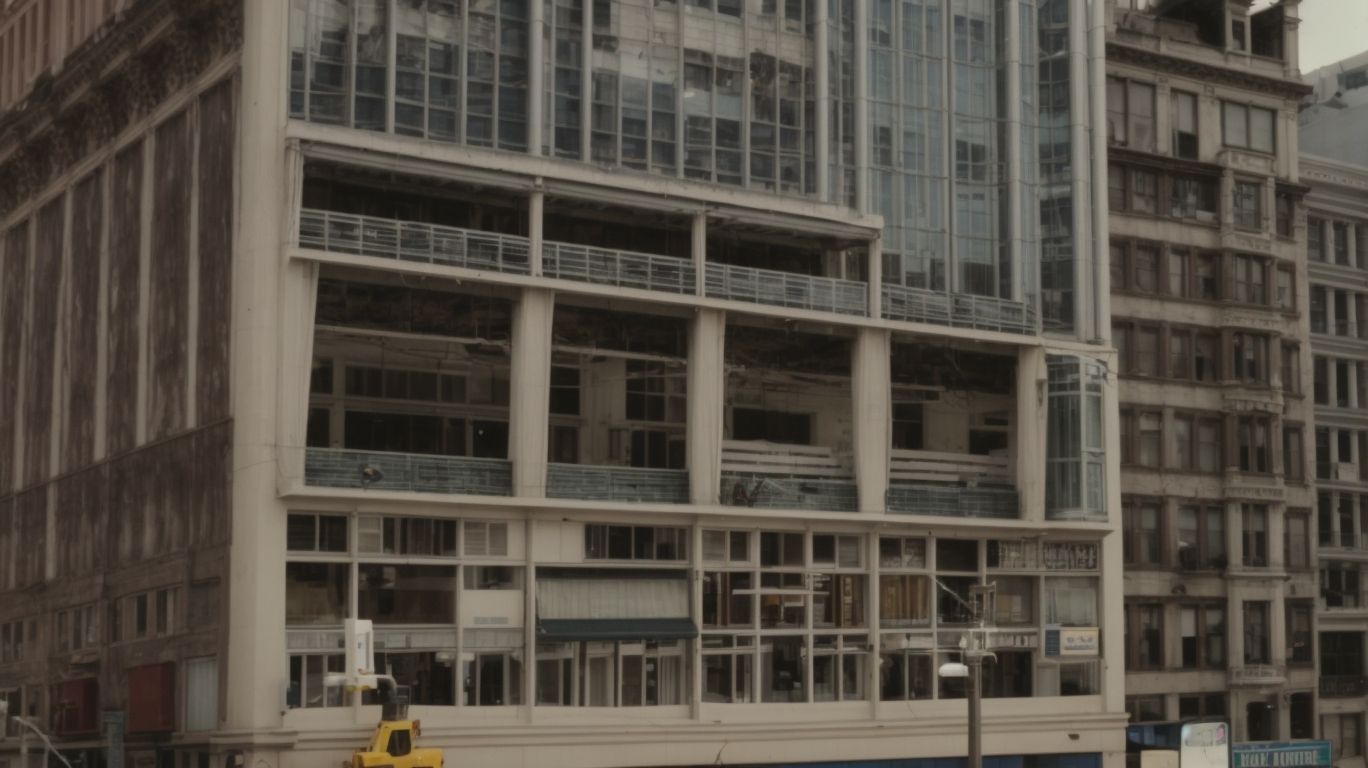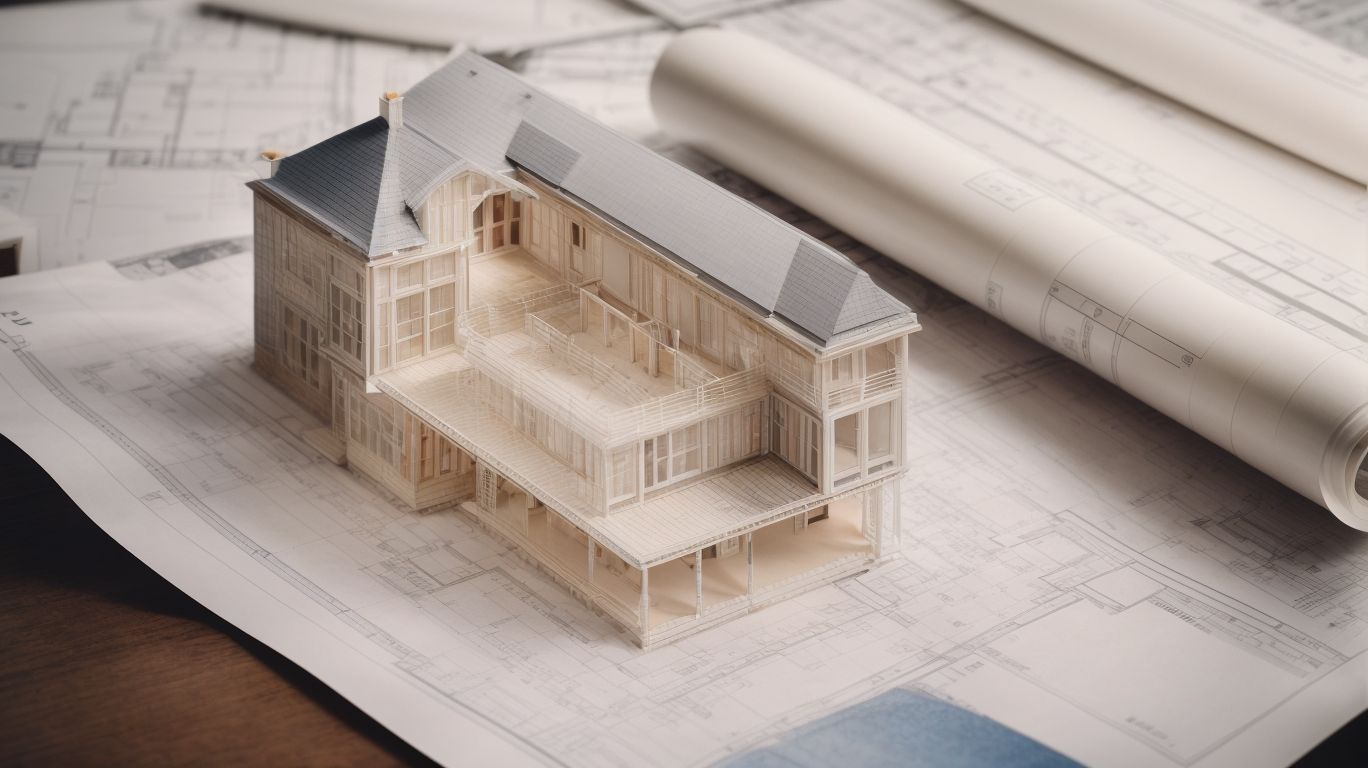
Benefits of Retrofitting Older Buildings in San Francisco
Are you a building owner or tenant in San Francisco? Are you concerned about the safety, energy efficiency, and overall value of older buildings in the city?
Retrofitting older buildings is the solution you’ve been looking for. In this article, we will explore the benefits of retrofitting, common retrofitting measures, challenges, and how building owners and tenants can benefit from this process. We will also discuss the government incentives available to support retrofitting projects. Stay tuned to learn more about making your building safer, more energy-efficient, and compliant with building codes.
What Is Retrofitting?
Retrofitting refers to the process of making improvements or upgrades to older buildings in San Francisco to enhance their energy efficiency, structural integrity, and overall sustainability while preserving their historic and architectural significance.
This practice plays a crucial role in addressing the environmental impact of older structures while also promoting sustainability.
By retrofitting these buildings with modern systems and technologies, such as energy-efficient insulation, LED lighting, and smart climate control, it becomes possible to reduce their overall energy consumption.
This not only helps in reducing the carbon footprint but also contributes to the long-term preservation of these historical buildings.
Building upgrades can enhance safety measures, making these structures more resilient and better equipped to withstand natural disasters, thereby safeguarding the city’s architectural heritage for future generations.
Why Retrofit Older Buildings in San Francisco?
Retrofitting older buildings in San Francisco is crucial due to its numerous benefits, including the preservation of historic structures, reduction of environmental impact, enhancement of property value, and promotion of sustainable urban development.
Preserving the city’s rich architectural heritage is crucial, and retrofitting older structures is one way to achieve this. By keeping these buildings as part of the urban landscape, we can also contribute to reducing carbon emissions and energy consumption, aligning with San Francisco’s commitment to environmental sustainability.
Furthermore, the process of retrofitting can enhance property values, making it a financially sound investment for property owners. This approach allows us to maintain the city’s unique charm and historical significance while also promoting progress and development.
What Are the Benefits of Retrofitting Older Buildings in San Francisco?
The benefits of retrofitting older buildings in San Francisco are multifaceted, encompassing cost savings, improved energy efficiency, promotion of sustainability, reduction of greenhouse gas emissions, and the overall enhancement of the built environment through green building initiatives.
Retrofitting older buildings can lead to substantial cost savings in terms of reduced energy consumption and maintenance costs. By upgrading systems and incorporating energy-efficient technologies, these buildings can significantly lower operational expenses.
Retrofitting facilitates a substantial reduction in greenhouse gas emissions, contributing to a more sustainable and eco-friendly built environment. This not only aligns with San Francisco’s commitment to environmental stewardship but also helps in creating healthier, more energy-efficient living and working spaces for the community.
What Are the Common Retrofitting Measures in San Francisco?
In San Francisco, common retrofitting measures for older buildings include seismic retrofit, energy efficiency upgrades, water conservation measures, and fire and life safety improvements, aimed at ensuring structural resilience and improved environmental performance.
Such retrofitting measures are vital in safeguarding the buildings against potential seismic activity. These measures also contribute to enhancing energy efficiency, reducing water consumption, and elevating overall safety standards.
The seismic retrofit helps buildings withstand tremors, while energy efficiency upgrades contribute to reducing the environmental footprint. Water conservation techniques play a crucial role in sustainable resource management, while fire and life safety improvements further enhance the overall building resilience.
Seismic Retrofitting
Seismic retrofitting involves the application of advanced retrofitting technology to strengthen the structural integrity of older buildings in San Francisco, ensuring their resilience against seismic events through strategic upgrades and reinforcements.
This process often includes techniques such as adding steel bracings and shear walls, installing base isolators, and reinforcing weak foundations.
By implementing these upgrades, the buildings can better withstand the lateral forces and ground motion associated with earthquakes.
Seismic retrofitting also encompasses the use of innovative materials and construction methods to enhance the overall stability and performance of the structures, providing a secure environment for occupants and minimizing potential damage during seismic activity.
Energy Efficiency Upgrades
Energy efficiency upgrades in older buildings in San Francisco focus on enhancing energy performance through the implementation of energy-efficient upgrades and compliance with retrofitting standards, contributing to reduced energy consumption and environmental impact.
These upgrades play a crucial role in improving the overall energy efficiency of buildings, resulting in lower utility costs and reduced carbon emissions.
By integrating advanced technologies and sustainable building materials, the objective is to create a more environmentally friendly and financially sustainable infrastructure. These upgrades align with the city’s energy efficiency goals, encouraging property owners to adopt measures that enhance the overall sustainability and resilience of the built environment.
Water Conservation Measures
Water conservation measures implemented in older buildings in San Francisco form an integral part of sustainability-focused retrofitting strategies, aiming to optimize building maintenance while promoting responsible water usage and environmental sustainability.
To improve water efficiency, buildings can implement measures such as installing low-flow toilets, faucets, and showerheads, as well as utilizing water recycling and greywater reuse technologies. These strategies not only reduce water consumption and utility costs, but also have a positive impact on the environment. Effective water management is essential in preserving local water resources and supporting conservation efforts in San Francisco and beyond.
Fire and Life Safety Improvements
Fire and life safety improvements represent essential aspects of retrofitting older buildings in San Francisco. This includes renovation, construction, and upgrading initiatives to ensure enhanced safety standards and emergency preparedness.
These improvements not only prioritize the protection of occupants but also contribute to the overall resilience and sustainability of the building infrastructure.
As technology advances and regulatory standards evolve, integrating fire and life safety features becomes increasingly crucial. This encompasses everything from fire-resistant materials and effective evacuation routes to advanced detection and suppression systems.
By incorporating these measures into renovation and construction projects, communities can significantly reduce the risk of fire-related incidents and enhance the safety and well-being of their residents and visitors.
What Are the Challenges of Retrofitting Older Buildings in San Francisco?
Despite its benefits, retrofitting older buildings in San Francisco presents challenges such as cost implications, potential disruption to tenants, and concerns related to historical preservation standards, which require careful consideration and strategic management.
Older buildings present numerous challenges, stemming from their unique architectural characteristics, logistical complexities, and strict building codes. These challenges often result in high costs, as modern technology and infrastructure must be integrated into the existing framework. Additionally, extensive construction work and temporary relocation needs can cause disruptions for tenants. The preservation of historical features also requires specialized expertise, which can lead to further time and cost implications. Successfully navigating these challenges requires collaboration between stakeholders and innovative solutions to ensure the long-term viability and preservation of these iconic structures.
Cost
Cost stands as a significant challenge in retrofitting older buildings in San Francisco. This necessitates the utilization of retrofitting programs, renovation grants, and energy conservation initiatives to address financial barriers and promote sustainable renovation efforts.
Financial barriers can often discourage building owners from investing in necessary structural upgrades and energy-efficient technologies. Fortunately, retrofitting programs like the Building Upgrade SF initiative provide support and resources to help offset these costs.
By leveraging renovation grants and energy conservation initiatives, building owners can not only reduce financial burdens but also contribute to the overall environmental sustainability of the city. Encouraging participation in these programs and initiatives is crucial in fostering a culture of responsible and cost-effective building renovation.
Disruption to Tenants
The potential disruption to tenants during retrofitting processes in older buildings of San Francisco poses challenges, necessitating strategic urban development and revitalization approaches to minimize inconveniences while facilitating building improvements.
Disruptions can significantly impact the daily lives and businesses of tenants, underscoring the need for thoughtful and proactive urban planning.
Revitalization initiatives, such as adaptive reuse and mixed-use development, can transform aging structures into vibrant, modern spaces while minimizing the inconvenience to occupants.
Building improvement projects, including energy-efficient upgrades and seismic retrofitting, not only enhance safety and efficiency but also contribute to a more comfortable and attractive environment for tenants.
Ultimately, prioritizing building enhancements within comprehensive urban development strategies is essential for mitigating disruptions and ensuring the continued vitality of San Francisco’s building stock.
Historical Preservation Concerns
Historical preservation concerns pose challenges in retrofitting older buildings in San Francisco, requiring adherence to building codes, and strategic building rehabilitation efforts to ensure the preservation of architectural heritage while meeting contemporary standards.
This delicate balance between preserving historical integrity and ensuring compliance with modern codes calls for a nuanced approach.
Preservationists often face the challenge of integrating necessary structural updates without compromising the unique character of historical buildings.
Incorporating modern amenities and technology while maintaining the authentic charm of these structures is a complex task.
This demands thorough research, innovative solutions, and collaboration between preservation experts, builders, and regulatory authorities to achieve a harmonious blend of preservation and contemporary functionality.
How Can Building Owners and Tenants Benefit from Retrofitting?
Retrofitting offers substantial benefits to building owners and tenants in San Francisco, including energy savings, improved safety, compliance with building codes, and overall enhancement of building performance, contributing to long-term cost savings and environmental impact reduction.
Building owners and tenants can experience significant reductions in energy costs through the installation of energy-efficient lighting, HVAC systems, and improved insulation. Retrofitting can enhance safety measures by upgrading fire alarm systems, installing sprinkler systems, and reinforcing structural elements to meet updated building codes and regulations. This not only provides a safer environment for occupants but also ensures compliance with evolving safety standards.
The overall enhancement of building performance increases property value and attracts potential tenants while reducing environmental impact, aligning with sustainable practices and regulatory requirements.
Lower Utility Bills
Retrofitting older buildings in San Francisco leads to lower utility bills for both building owners and tenants, fostering cost savings and financial benefits through efficient renovation, construction, and sustainable energy practices.
This initiative not only reduces energy consumption but also enhances the overall value of the property.
By incorporating energy-efficient lighting, heating, and cooling systems, building owners can significantly cut down on operational costs. Tenants also benefit from reduced utility bills, making the property more attractive and competitive in the market.
Retrofitting can contribute to a positive environmental impact by reducing the building’s carbon footprint, aligning with the increasing focus on sustainability and green building practices.
Increased Property Value
Retrofitting older buildings in San Francisco contributes to increased property value for building owners and tenants. This is attributed to comprehensive renovation, green building initiatives, and the overall enhancement of the building’s structural and environmental performance.
This surge in property value is driven by the potential for lower energy costs, improved indoor air quality, and a reduced environmental impact. The integration of energy-efficient technologies and sustainable materials as part of the retrofitting process not only adds monetary value but also aligns the building with modern environmental standards and regulations.
The improved functionality and aesthetics resulting from retrofitting can attract environmentally-conscious tenants, further elevating the property’s desirability and rental potential.
Improved Safety and Comfort
Retrofitting older buildings in San Francisco leads to improved safety and comfort for building owners and tenants. This is achieved through seismic upgrades, fire and life safety improvements, and enhancements to structural integrity, ensuring a secure and comfortable built environment.
Upgrading buildings not only strengthens their structure but also provides a sense of security to occupants, especially in earthquake-prone areas like San Francisco. Seismic upgrades greatly reduce the risk of structural damage during earthquakes, while safety measures like fire suppression systems and improved evacuation routes ensure the well-being of occupants.
These structural improvements not only increase the longevity of the building but also create a more comfortable and contemporary living or working space.
Compliance with Building Codes
Retrofitting ensures compliance with building codes, benefiting building owners and tenants in San Francisco by aligning with retrofitting standards, implementing building upgrades, and integrating energy-efficient solutions to meet contemporary regulatory requirements.
By adhering to building codes through retrofitting, owners and tenants can guarantee the safety and structural integrity of their properties while also fostering a sustainable environment.
The adoption of standards and guidelines helps in creating structures that are resilient and have a reduced environmental impact. Building upgrades not only enhance the structural strength but also improve the overall aesthetic appeal and functionality of the property, making it more attractive to potential occupants and investors.
Energy-efficient solutions play a pivotal role in reducing operational costs and minimizing the ecological footprint, thus contributing to a greener and more sustainable community.
What Are the Government Incentives for Retrofitting Older Buildings in San Francisco?
Government incentives for retrofitting older buildings in San Francisco include property tax exemptions, low-interest loans and grants, and an expedited permitting process, aiming to encourage and facilitate sustainable retrofitting initiatives through financial and administrative support.
In San Francisco, there are various incentives available for building owners who want to improve energy efficiency and reduce the environmental impact of older structures. These include property tax exemptions, low-interest loans, and grants. Additionally, the city offers an expedited permitting process to streamline regulatory steps and save time. These measures align with San Francisco’s commitment to sustainable urban development and encourage environmentally responsible retrofitting.
Property Tax Exemptions
Property tax exemptions serve as a notable government incentive for retrofitting older buildings in San Francisco. These exemptions offer financial relief and support for retrofitting programs, renovation grants, and historical preservation initiatives, promoting sustainable development and preservation efforts.
These exemptions play a crucial role in encouraging property owners to invest in retrofitting projects. By enhancing the structural integrity of older buildings and reducing their vulnerability to seismic activities, these incentives contribute to the safety and resilience of the city’s infrastructure.
By alleviating the financial burden associated with property taxes, these incentives foster a conducive environment for property owners to participate in sustainable renovation programs. This ultimately contributes to the revitalization of historical landmarks and the overall aesthetic appeal of the city.
Moreover, these exemptions align with the city’s sustainability goals by promoting energy-efficient upgrades and environmental conservation within the built environment. They serve as a powerful tool in promoting sustainable development and preserving the city’s unique architectural heritage.
Low-Interest Loans and Grants
Low-interest loans and grants represent crucial government incentives for retrofitting older buildings in San Francisco, facilitating the adoption of retrofitting technology, energy performance enhancements, and comprehensive renovation through accessible financial support.
Financial mechanisms are crucial in incentivizing property owners and businesses to invest in eco-friendly technology. This includes energy-efficient HVAC systems, smart lighting, and sustainable building materials. These mechanisms also promote the use of renewable energy sources like solar panels and geothermal heating, resulting in improved energy performance for existing structures.
These incentives have a positive impact on urban areas, aligning with San Francisco’s sustainable development goals and creating a more resilient and energy-efficient built environment.
Expedited Permitting Process
The expedited permitting process serves as a valuable government incentive for retrofitting older buildings in San Francisco. It streamlines administrative procedures, aligns with building codes, and promotes sustainable urban development and design through efficient approval mechanisms.
This approach encourages property owners to upgrade and modernize their buildings, contributing to the preservation of historical architecture and reducing the environmental impact of outdated structures.
By expediting the permitting process, the city not only facilitates quicker and more efficient renovations but also fosters a culture of compliance with building codes and regulations. This ensures that upgraded structures meet modern safety and sustainability standards.
The streamlined administrative procedures enable urban development projects to progress swiftly, aligning with the city’s vision for a more sustainable and resilient built environment.




No Comments